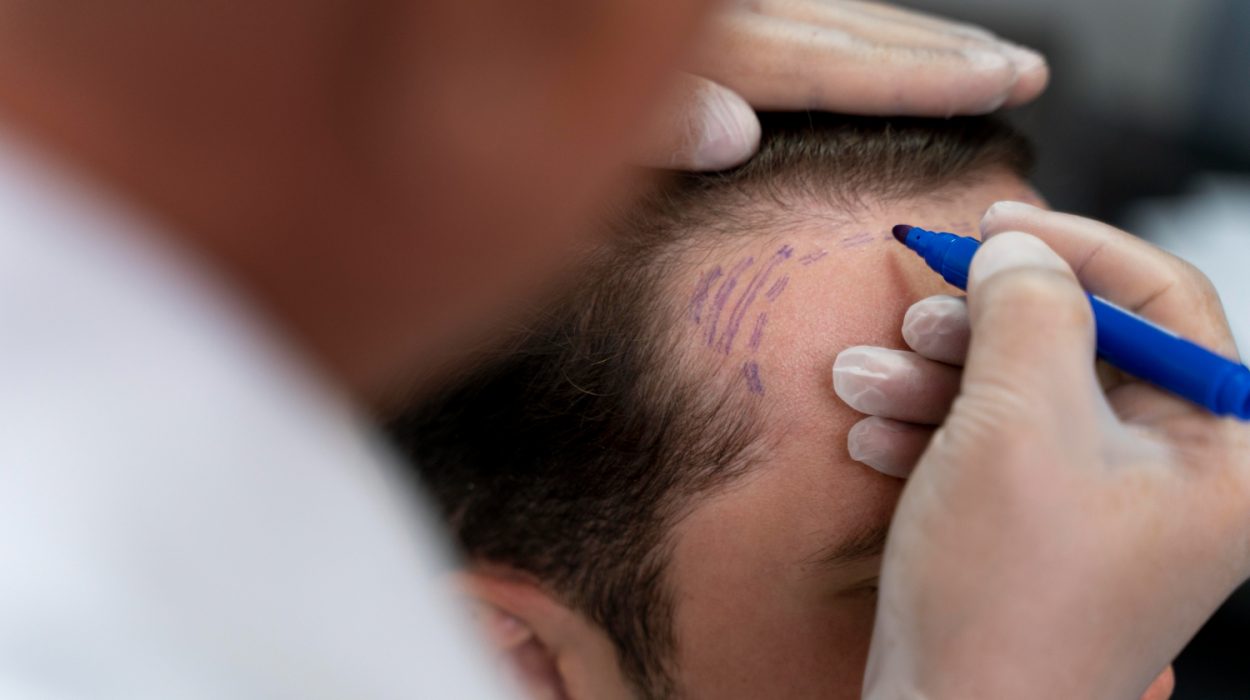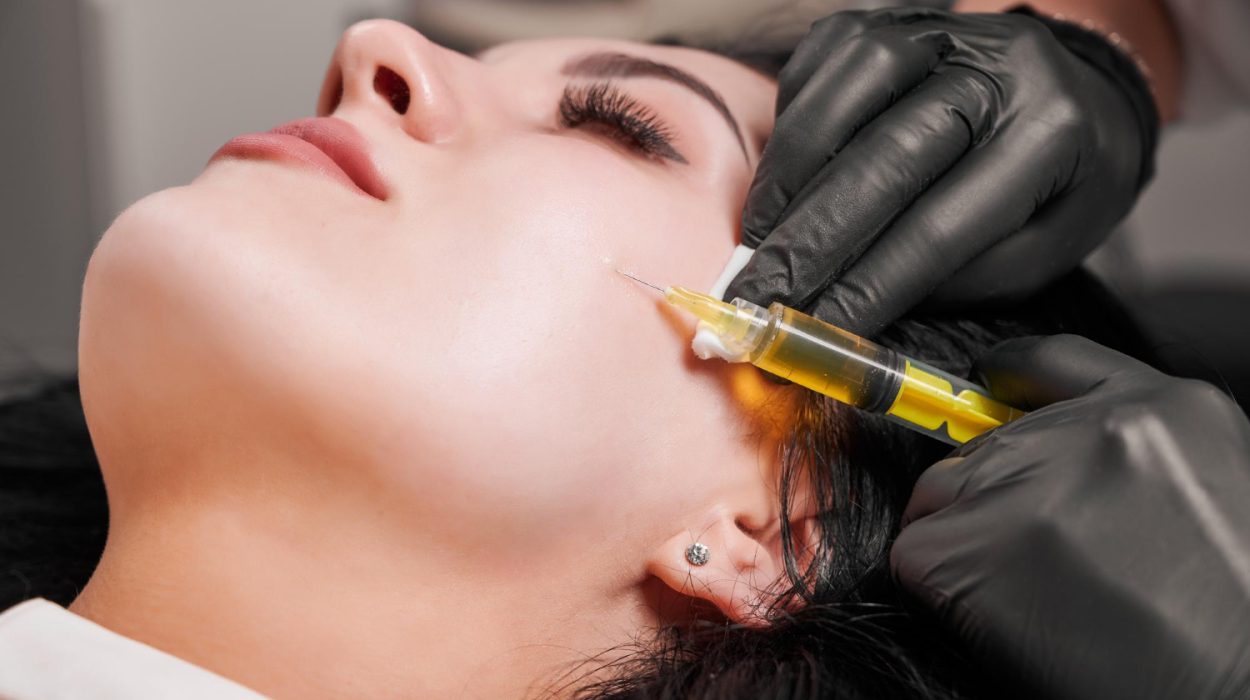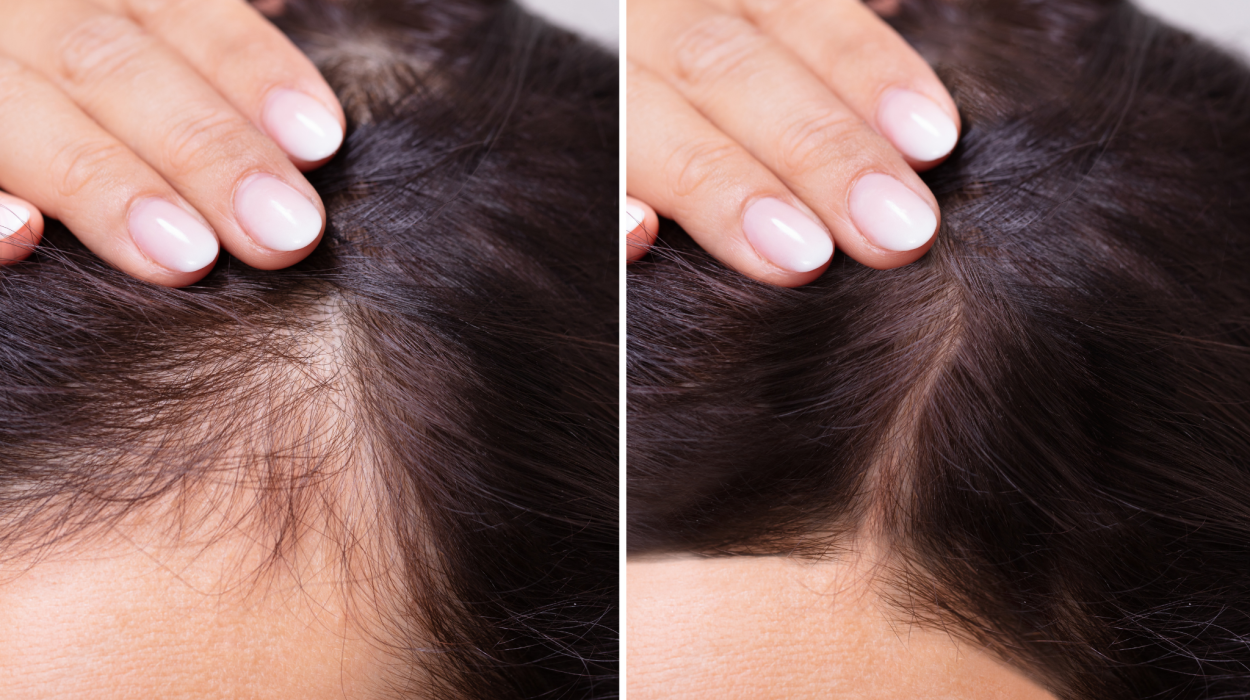Looking for a long-term solution for your severe hair loss? You may require a hair implant. Most people today know about hair implants and transplants, but they are often used interchangeably. However, in reality, they are different. If you are experiencing hair loss, you must know what each procedure entails. In this blog, let’s deep dive into hair implants- what they are, how they work, a brief procedural outlook and if they are recommended for you!

What are Hair Implants: Understanding the Basics
Hair implants are artificial hair placed in dead follicles. They are synthetic hair that do not grow like living hair, as seen in hair transplants. If an implanted hair strand falls out or gets pulled out, the only solution is to replace it with new synthetic hair. These artificial hair can also be rejected due to scalp infections.
In some cases, hair implants refer to ‘implanting’ harvested follicular units into the recipient sites. Hair implants are suitable for those who want quick results without harvesting hair from donor sites or those who do not have sufficient donor hair as implants cause immediate density addition.
Hair Implants vs Hair Transplants: Which is better for you?
Hair Transplants
People experiencing hair loss or alopecia often turn to treatment options that help restore hair. Two most commonly considered options include hair implants and transplants.
Hair transplant is a procedure in which hair follicles are harvested from a donor area (usually at the back of the head) and placed in the balding areas on the scalp. Hair transplant is performed in a way that it mimics natural hair growth patterns, to ensure a permanent solution to hair loss with the most aesthetic and natural-looking results.
- These cannot be reversed once injected into the body.
- While their appearance reduces over time, reversing them is almost impossible.
Hair grows naturally over time, eventually achieving the desired density.
Results look natural, as the transplanted hair follows your normal growth pattern.
There is minimal risk of rejection or adverse reactions, as the transplanted hair is from the individual's body.
Typically provides a permanent solution.
Ideal for individuals with active lifestyles.
Hair Implants
Synthetic hair is implanted.
It provides immediate volume but may not blend seamlessly with natural hair growth.
It may appear less natural due to the synthetic nature of the hair.
There is a higher risk of infection, scalp reactions, and fibre fallout as synthetic materials are used.
A long-term, but not permanent, solution.
It is not recommended for those with an active lifestyle involving strenuous activities like swimming or contact sports.
The Hair Implant Procedure: Step-by-Step Guide
At Hortman Clinics, the hair implant procedure begins with our experts performing a fibre compatibility test to ensure you are not allergic to the implant. In the first month, around 100 artificial hair strands are inserted and monitored for allergic reactions. If there are no signs of allergy after one month, the remaining procedure is performed.
During the procedure:
- The doctor anaesthetises the scalp or target area with local anaesthesia so you do not feel any pain or discomfort.
- Once the area is numb, the doctor uses a hair implant device to implant each strand into the scalp.
- This process is done one hair at a time until the required hair density is achieved, so it may take several hours to complete.
- Once done, the doctor cleans and disinfects the scalp to prevent infections.
Follow your doctor’s after-care instructions during the recovery period. Maintain follow-ups with your doctor to enable them to monitor the treated area.
How much do Hair Implants cost?
Several factors determine the cost of hair implants, and these include:
- Quality of the artificial hair
- Thickness of the hair you want
- Hair density required in the target area
- Expertise and experience of the doctor
The cost of hair implants may be slightly higher than that of hair transplants, but don’t let that worry you. At Hortman Clinics, we offer the best treatments tailored to your needs.
Benefits of Hair Implants: Why more people are choosing this option?
Hair implants offer several advantages over other treatments:
- The procedure is quick, simple and painless
- You can get aesthetic results in a couple of hours without having to wait for your hair to grow, as with hair transplants.
- Get high hair density in just a few hours.
- This outpatient procedure allows you to return to your routine immediately.
- Affordable option
- It can be combined with other procedures
- An excellent option for people with limited donor area for hair transplant
Recovery and Aftercare for Hair Implants: What to expect?
After a hair implant procedure, you may experience mild swelling and redness in the treated area, but this will subside over the next few days. Your doctor may advise you to avoid strenuous exercise for the first few days after the procedure to minimise the risk of dislodging the newly transplanted hair implants. Follow your doctor’s aftercare instructions to the T to ensure maximum success of the treatment.
Here are a few things to keep in mind:
- Avoid using your regular haircare products. Use the products recommended by your doctor.
- Wash your implanted hair with a gentle shampoo and use a soft brush to comb them. Treat your scalp gently.
- Take the medications prescribed by your doctor to prevent infection. Avoid scratching or pulling your hair to prevent damage.
- Use special hair creams meant for use with hair implants that make it easier to comb and style your hair.
Non-Surgical Hair Implants: Are they right for you?
Non-surgical hair replacement options allow you to restore your hair without surgery. A few of these include:
- Hair patches
- Toupees
- Hair extensions
- Scalp micropigmentation
If you are looking for a way to regain your confidence and restore the glory of your mane but do not wish to undergo an invasive procedure, non-surgical hair implants may be what you need. Non-surgical hair implants offer the flexibility of length, texture, and colour to personalise your appearance per your preferences.
Key Takeaway!
Hair implants are an effective alternative for individuals seeking quick results in their battle against hair loss. While they provide instant volume and density, you must weigh the pros and cons. Synthetic hair used in hair implants may pose risks such as infections or scalp reactions, and they may not blend as naturally as hair transplants. However, with proper aftercare and maintenance, they can be a viable option for individuals not looking for long-term solutions.
To learn more about hair implants and whether they are right for you, contact our experts at Hortman Clinics today!
HORTMAN CLINICS NEWS
Related News
We are here for you. Always.
Everything we do is tailored to your needs, this is why we take our time to take care of you and answer all your questions.




